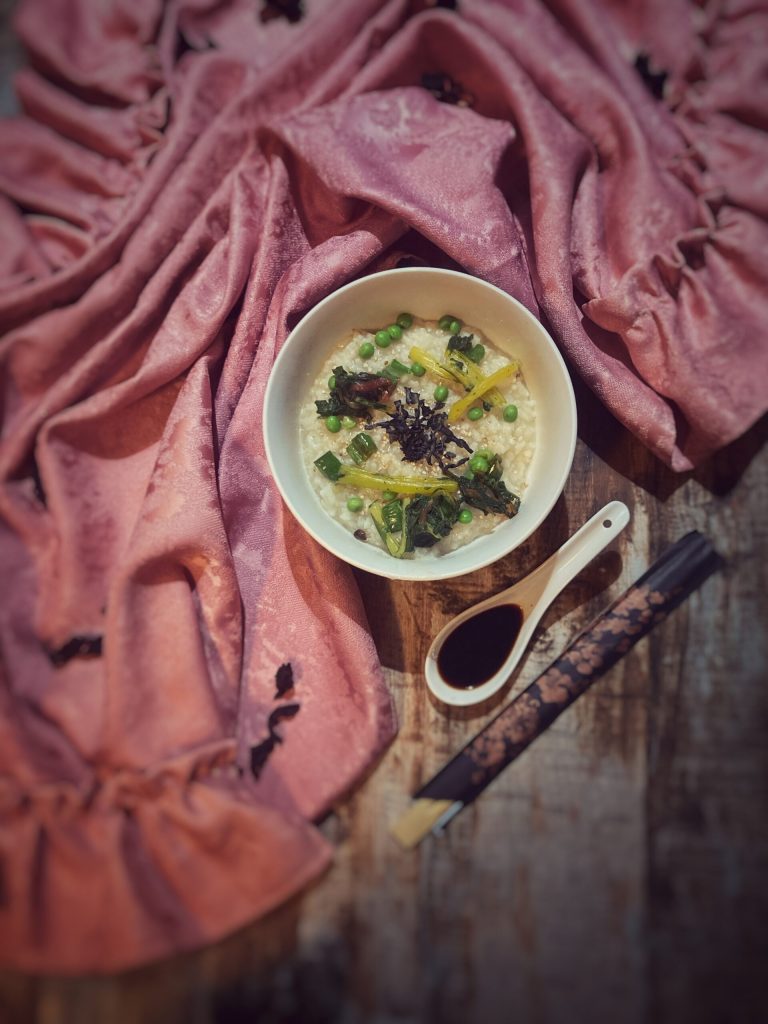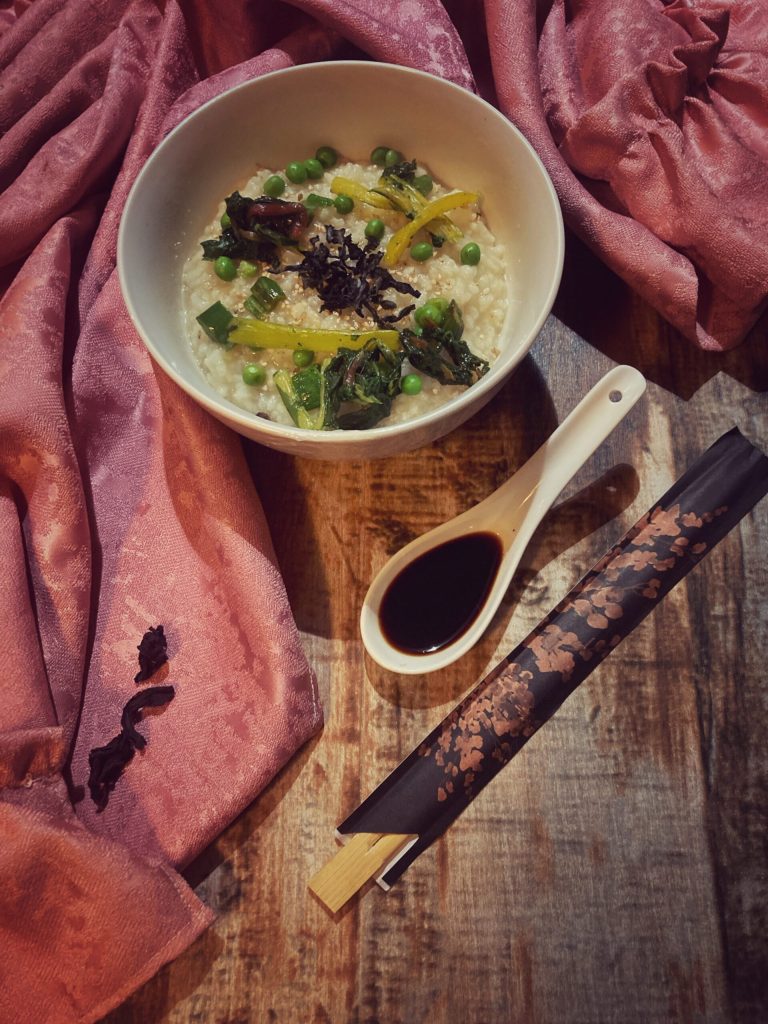Endōname kayu introduces the fifth edition of the column “Around the World in 80 Dishes Part 5”, dedicated in the first 20 days, and 20 dishes, to the Asian area.
▶ Kayu, or okayu, is a commonly rice-based soup, but it can be based on other grains.
▶ It is a dish with ancient origins that still today is part of the repertoire of healing recipes.
▶ For the Japanese, it is the comfort food – or ソウルフード soul food as they call it – par excellence when feeling unwell.
▶ Compared to the same recipe in other eastern countries, kayu is much thicker due to the 1 to 5 rice-to-water ratio (Cantonese-style congee is 1-12). This harmonious proportion is called 全粥 zen-gayu.
▶ In some areas, coconut milk is used instead of water and can be served plain or with the addition of very flavorful ingredients that will vary according to local customs.
My version is with:
– PEAS (endōname)
– GREEN and YELLOW CHARD
– SPRING ONION
– DRIED WAKAME SEAWEED
On the blog, you can already find the Chinese version of the recipe:

- Difficulty: Easy
- Cost: Very cheap
- Rest time: 30 Minutes
- Preparation time: 10 Minutes
- Portions: 2 people
- Cooking methods: Boiling
- Cuisine: Japanese
- Seasonality: All seasons
Ingredients
- 1.5 cups uruchimai rice
- 6.3 cups water
- to taste chard
- to taste peas
- to taste wakame seaweed (dried)
- to taste sesame
- 1 spring onion
- to taste sesame oil
- to taste salt
Steps
Wash and drain the rice.
Cover with water and let rest for 30 minutes.
Drain.
In a pot, preferably cast iron, add rice and water. Bring to a boil over high heat, covered, then reduce and cook for 30 minutes.
Add salt only at the end of cooking.
In a bowl, garnish the rice with: sautéed chard and spring onion with a drizzle of sesame oil, boiled peas, dried wakame seaweed, and sesame.
Or use the ingredients you prefer.

Literary Tip:
For the monthly literary recommendation, I chose a novel by one of the most famous Japanese writers: @murayama_yuuka_official
THE KIMONO ROOM
(original title: Hanayohi 花酔ひ)
⭐ Find the plot also on my TikTok for #booktok:
For three generations, in Tokyo, the young Asako’s family has been running a refined kimono shop. When Asako receives from her grandmother the splendid private collection of ancient, very precious kimonos, she understands that it’s time to leave her job and start a new life. Her husband Seiji seems to have grown distant from her. It is through the kimono shop that Asako meets Masataka, an intriguing stranger from Kyoto.
For the monthly literary recommendation, I chose a novel by one of the most famous Japanese writers: @murayama_yuuka_official
THE KIMONO ROOM
(original title: Hanayohi 花酔ひ)
⭐ Find the plot also on my TikTok for #booktok:
For three generations, in Tokyo, the young Asako’s family has been running a refined kimono shop. When Asako receives from her grandmother the splendid private collection of ancient, very precious kimonos, she understands that it’s time to leave her job and start a new life. Her husband Seiji seems to have grown distant from her. It is through the kimono shop that Asako meets Masataka, an intriguing stranger from Kyoto.
@viaggiandomangiando ♬ Oriental traditional music mysteries 19(1252284) – earbrojp
@viaggiandomangiando ♬ Oriental traditional music mysteries 19(1252284) – earbrojp
FAQ (Questions and Answers)
What are the different types of rice in Japan?
Uruchimai (common rice): It is the most common type of rice in Japan and becomes harder to work with once it cools.
Mochimai (glutinous rice): It is mainly used for making rice cakes and sekihan (steamed rice with red beans). It remains soft and tasty.
Aromatic Rice: Kaorimai (aromatic rice) is used for celebrations and special occasions. When you add 10% to common rice, it provides a flavorful aroma.
Akamai (red rice): Red rice is the first variety of rice brought to Japan from China in ancient times. It is rich in proteins and vitamins. Akamai is said to be the origin of sekihan.
Kuromai (also known as kodaimai: black rice): One of the varieties of rice imported from ancient China, kuromai has a black pigment on its surface. Add a tablespoon to your quantity of white rice before cooking for a delicious purple color.
Midorimai (green rice): Midorimai is an ancient variety of rice brought to China during the Jomon period. It is cultivated in Nepal and Laos.
Sakamai: It is the best for making sake.
Germinated brown rice: With a sprout of 0.5-1.0 mm, germinated brown rice is the healthiest choice, having a high content of GABA (gamma-aminobutyric acid).

